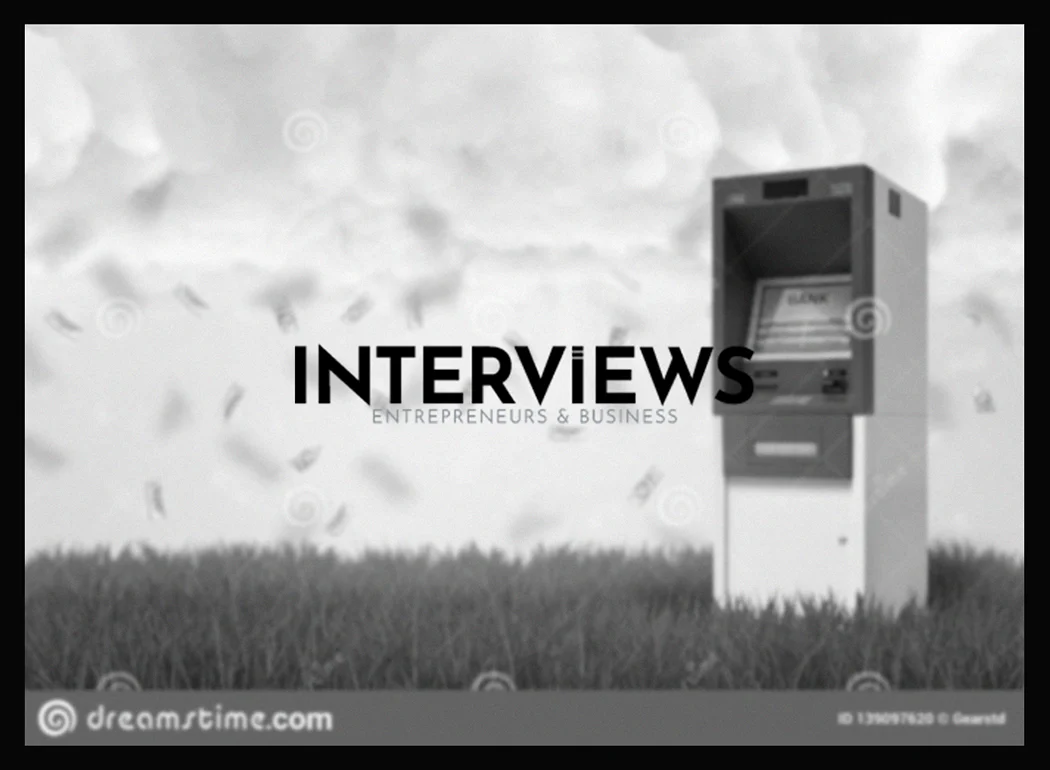Here’s the scoop on ATM ownership. It goes beyond placing a cash machine and waiting for profits. There’s more detail involved. It’s essential to know these basics before you consider this venture.
Getting Started with ATM Ownership
Thinking about getting an ATM? It can be a smart move if done correctly. Before you dive in, let’s explore the fundamentals, step by step. Consider this your ATM ownership primer.
First things first: Why do you want an ATM?
Ask yourself the reason behind wanting an ATM. Is it a true business opportunity or just a fleeting desire? Knowing your ‘why’ is Step 1 – Determine why you want an ATM. Maybe you feel a lack of service nearby or want to attract more customers. Clarity of purpose matters.
Location, Location, ATM Location
Is your business a good place for an ATM? This is Step 2 – Assess your business location for an ATM. High foot traffic is essential. Consider spots like busy streets, gas stations, or shopping centers. Few visit empty alleys for cash. Be realistic about your location’s potential.
Procurement Options: Buy or Lease?
Still on board? Great! Now for Step 3 – Review your ATM procurement options. You have various choices. Options include buying outright, leasing, or placement programs with someone else managing the machine. Each option has pros and cons, largely concerning upfront costs versus revenue split. We will discuss costs soon.
Partnering with National ATM Systems
Consider Step 4 – Partner with National ATM Systems. They manage many behind-the-scenes tasks. They handle transaction processing, compliance issues, and sometimes even the machine, based on your choice. They guide you through cash management.
Delivery, Programming, and Installation: The Technical Details
Almost finished! Step 5 – Deliver, program, and install your ATM. Here, the ATM meets its new home. Delivery and installation typically are straightforward. Programming ensures proper cash dispensing and fees. If you’re not tech-savvy, let professionals handle it.
Training and Cash Loading: Keeping it Going
Final step: Step 6 – Train and load the ATM with cash. You or a team member must learn how to securely load cash and understand the system. You’re responsible for keeping the ATM filled. Think of it like feeding a profitable pet.
Breaking Down ATM Costs
Now let’s discuss cash: the costs linked to owning an ATM. There are upfront and ongoing expenses. Let’s explore the financial conditions.
Initial Outlays: Starting Expenses
Machine Cost: Basic to Premium
The ATM itself is a major cost. A basic ATM is around $2,000. It’s reliable but lacks features. If you want an advanced model, prices can exceed $10,000. An average freestanding ATM costs around $2,500 to $3,000. Used ATMs can be found for $1,600 to $1,800. Choose wisely.
Installation Fees: The Setup Price
Don’t forget about installation fees. These costs typically are included in your contract. It involves securing the ATM and preparing it to dispense cash. It’s a “we’ll take care of it” fee.
Ongoing Expenses: Keeping it Running
Cash Replenishment: Keeping it Full
You need to maintain cash levels in the ATM. This is not free. You either use your own funds or pay a service for refills. Consider the float, which is the cash in the machine at any one time.
Maintenance: Preventative Care
ATMs need regular maintenance to function well. This prevents breakdowns. Think of maintenance like oil changes for machines.
Repairs: Handling Breakdowns
Things do break down. It’s common with machines used daily. Be ready for some repair expenses. Factors like vandalism, wear, and mechanical failure can occur. Set aside funds for unexpected repairs.
Security: Protecting Your Cash
Security goes beyond theft prevention. It also ensures safety for users and maintains trust. This may involve cameras, lighting, and fees for security services depending on risk levels.
Navigating Legal Matters: ATM Regulations
The legal side of ATM ownership is complex. Regulations exist for effective operations. Ignoring laws can lead to serious issues. Let’s explore necessary legal considerations.
State Licensing and Compliance: Learn Local Laws
ATM rules differ widely. ATM regulations vary by state. Some states want specific licenses to operate. Others impose unique compliance rules. What’s acceptable in one state may not be in another. Do your research or consult your ATM provider for guidance.
Annual Ownership Notice: Informing Authorities
Fun fact: Non-bank machine owners must file an annual ownership notice. It signals ownership to the government. This is typically handled through your ATM processor. That’s one less hassle for you.
Non-Bank Regulations: More Local Rules
Some states impose non-bank regulations. These add complexity. Your provider should handle these aspects for you. Verify with them for a smoother process.
LLC: Limiting Your Personal Liability
Consider forming an LLC. This could be beneficial. Sharing your space with your ATM requires established trust. An LLC adds professionalism and separates personal asset risks from your business. It enhances credibility.
Background Check: A Clean Record
You likely must undergo a background check. First, you’ll provide your driver’s license to verify identity for legal ATM operations. They want to exclude anyone planning illegal activities. If your record is clean, you should be fine.
Show Me the Money: ATM Profitability
Let’s shift gears to profits. How can your ATM generate income? A steady stream of surcharge revenue is possible. Let’s calculate potential earnings.
Profit Per Transaction: Small Fees Add Up
How much can you earn from transactions? Profits usually range from a few cents to several dollars per use. Your profit reflects the fees set, transaction numbers, and operational expenses. You control surcharge fees. More transactions yield greater fees; lower costs increase profits. Simple.
Revenue Streams: Beyond Surcharges
Surcharges are just one income source. Other revenue avenues can also exist, including partnerships or advertising on machines.
Fees are the main income source. Surcharge fees paid by customers are essential. But don’t forget about other revenue streams. You also have interchange fees from the cardholder’s bank. That’s extra revenue from the bank for offering convenience. Plus, consider selling advertising on the ATM screen. Use that screen as a mini billboard.
Profitability Factors: What Makes an ATM a Money Magnet?
Not all ATMs are equally profitable. Location and foot traffic matter significantly. Busy areas attract customers needing cash. Surcharge rates need balance; too high, and customers leave. Too low, and you lose money. Measure transaction volume carefully. More users mean more earnings. Keep operational costs low, too. Maximize profits by managing costs.
Managing the Green Stuff: ATM Cash Management
ATMs distribute cash, so managing it matters greatly. Cash doesn’t magically appear. Someone must fill the machine securely. Let’s discuss cash logistics.
Who Fills ‘er Up? Cash Loading Options
Who loads cash into the ATM? You have several options. Banks often use staff or armored service companies. Those armored trucks deliver cash to machines. You could also hire armored service companies. If you’re brave, the ATM owner can load cash or hire a third party. DIY loading is risky without strong security measures.
The Cash Replenishment Process: Vault to ATM
Curious about the cash source for ATMs? It originates in high-security vaults at banks. Banks and armored services first stock cash in these secure facilities. Armored vehicles transport it to ATMs. It’s a secure convoy tracked from start to finish. Finally, the cash is loaded into ATM cassettes in correct denominations. It resembles a Tetris game with stacks of bills.
Replenishment Frequency: How Often to Refill
When should you refill cash? That depends on location. High-traffic areas may require daily refills, while quieter spots might see less frequent service. Areas near concert venues may need daily or multiple daily refills. Moderate-traffic places? A few times a week will suffice. Quiet areas? Once a week or even month may work. Keep an eye on cash levels to prevent “out of cash” signs.
How Much Dough is Inside? ATM Capacity
What’s the cash capacity of an ATM? It can hold between $10,000 and $100,000, based on location and time. That’s quite a range! On average, retail ATMs in the US hold $10,000 to $20,000 in cash. Several factors influence cash levels: Location – busy areas require more. Time of day – weekends need higher levels. Type of establishment – a busy casino ATM requires more than a laundromat.
Withdrawal Limits: Curbing the Cash Flow
ATMs impose withdrawal limits. Users cannot empty accounts instantly. Withdrawal limits typically range from $300 to $1,500 daily. Such limitations help with security and fraud prevention, plus managing cash supplies. Someone cannot just withdraw $10,000 from an ATM without visiting multiple times.
Location, Location, Installation: Where to Put Your Machine
You have an ATM, but where should it go? Random placement won’t work. Strategy is crucial for maximizing transactions and profits. Let’s look at ATM placement.
Where Can ATMs Live? Ubiquitous Machines
Good news! An ATM can be placed anywhere with power access. Benefits include versatility. From posh hotel lobbies to dive bars, an ATM can thrive everywhere. Smart placement is essential for success.
Installation Considerations: Location Checklist
Before drilling and bolting the ATM down, consider these points. Selecting the right site is crucial. We can’t stress this enough. Ensure compliance with local regulations and permits. A surprise from authorities is a nightmare. Conduct a thorough security assessment of the installation site. Consider safety, lighting, and crime rates.
Permission Please: Getting the Green Light
If you don’t own the property where you want the ATM, you need permission. You’ll require consent from the property owner or manager before proceeding. Get it documented. Handshake deals over ATMs do not work well.
Risky Business: ATM Ownership Dangers
Handling cash in public is risky. It’s not all easy money and surcharge fees. There are downsides to owning an ATM. Let’s face reality.
Security Threats: The Dark Side of ATMs
ATMs face theft, vandalism, skimming, and security issues. Criminals attempt to steal machines or card data. Skimming involves devices that capture card information. Stay alert and maintain strong security measures to protect your investment.
Crime Rates: Relatively Rare, But Real
Is crime against ATMs common? Surprisingly no. Statistics suggest ATM-related crime occurs between one per million and one per 3.5 million transactions. Thus, crime is indeed rare. However, “rare” doesn’t mean “never.” The risk remains.
Alternatives to Buying: ATM Options
Buying an ATM is one approach, yet not the only one. Alternatives exist if you want to avoid upfront costs or responsibilities. Let’s explore different options.
Leasing: ATM Rental
Don’t want to spend thousands on an ATM? Try leasing instead. An average lease may cost around $80 per month, which includes installation. Leasing offers lower upfront expenses and predictable budgeting. It’s an excellent option for testing interest.
ATM Placement: Hands-Off Approach
Want to ease your workload? Consider ATM Placement programs. Companies like National ATM Systems take care of everything. They install and maintain the machine. You host it, share surcharge revenue. No upfront costs, less hassle, profit sharing.
The Bottom Line: ATM Financials
Let’s summarize some financial insights. Can ATM ownership lead to wealth? Likely not immediately, but it offers steady income potential. Here’s a breakdown of numbers.
Monthly Earnings: It Depends…
How much can you earn monthly? Earnings vary based on location, traffic, and surcharge rates. No surprise there. Benchmarks show a monthly return of 1% to 4%. So, a $3,000 ATM might yield $30 to $120 monthly. That’s not enough for retirement, but decent for passive income.
Potential Income: Surcharge Scenario
Let’s do some quick math using averages. Surcharge fees typically range from $2.50 to
$3.00 per transaction. Assume you average $2.75 with about 6 transactions daily. That translates to $15 to $18 each day or $450 to $540 monthly from one ATM. Not bad for a machine distributing cash!
The Future of ATMs: Interactive Teller Machines (ITMs)
The ATM market is changing. Meet Interactive Teller Machines (ITMs). Many customers still haven’t seen one yet. ITMs offer enhanced services, like video calls with tellers for complex transactions. Are they the future? Perhaps. But traditional ATMs still generate cash and fees.
This overview covers ATM ownership essentials. It shows potential while emphasizing research, planning, and understanding costs, regulations, and risks. Now go conquer cash dispensing responsibly!





